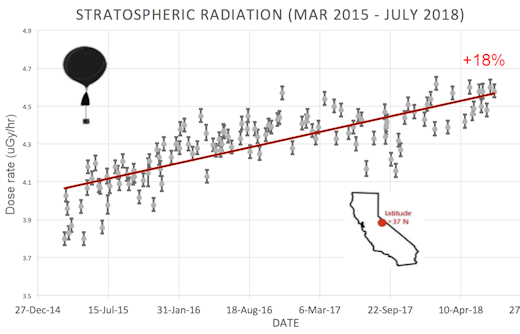When I posted "The Fuzzy Logic of Fleeing for Your Life" with its outro story of Air France flight-358, Paris to Toronto and how the flight attendants got all 309 passengers and crew off the plane in 125 seconds, despite 4 of 8 exits being unusable, I was thinking of one flight attendant in particular who used to tell me that even though I gave her a hard time, should the worst happen she would probably be the one to save my life.
She was an interesting woman. There was the time, back when there was an East Berlin, that she caused an international incident that required the U.S. State Department to intervene. After many years of flying international she got into investments and then real estate, quite the hustler and quite sharp.
I thought I'd look her up and tell her about the 'Fuzzy Logic' post and though I hadn't talked to her in years the contact information was still good and I was told she was dead.
Cancer.
Quite young.
And I remembered a study from last year in the journal Environmental Health:
Cancer prevalence among flight attendants compared to the general populationHere's the Harvard Gazette's blurb on the paper.
Back to the study, after adjusting for smoking and weight, a couple of the possible causes that were highlighted were disrupted circadian rhythms (shift work, time zones) and exposure to cosmic radiation.
Which ties into something that SpaceWeather.com has been doing for a few years:
Cosmic Rays in the Atmosphere
SOMETHING NEW! We have developed a new predictive model of aviation radiation. It's called E-RAD--short for Empirical RADiation model. We are constantly flying radiation sensors onboard airplanes over the US and and around the world, so far collecting more than 22,000 gps-tagged radiation measurements. Using this unique dataset, we can predict the dosage on any flight over the USA with an error no worse than 15%.
E-RAD lets us do something new: Every day we monitor approximately 1400 flights criss-crossing the 10 busiest routes in the continental USA. Typically, this includes more than 80,000 passengers per day. E-RAD calculates the radiation exposure for every single flight.The Hot Flights Table is a daily summary of these calculations. It shows the 5 charter flights with the highest dose rates; the 5 commercial flights with the highest dose rates; 5 commercial flights with near-average dose rates; and the 5 commercial flights with the lowest dose rates. Passengers typically experience dose rates that are 20 to 70 times higher than natural radiation at sea level....
*****
.... To measure radiation on airplanes, we use the same sensors we fly to the stratosphere onboard Earth to Sky Calculus cosmic ray balloons: neutron bubble chambers and X-ray/gamma-ray Geiger tubes sensitive to energies between 10 keV and 20 MeV. These energies span the range of medical X-ray machines and airport security scanners.Column definitions: (1) The flight number; (2) The maximum dose rate during the flight, expressed in units of natural radiation at sea level; (3) The maximum altitude of the plane in feet above sea level; (4) Departure city; (5) Arrival city; (6) Duration of the flight.SPACE WEATHER BALLOON DATA: Approximately once a week, Spaceweather.com and the students of Earth to Sky Calculus fly space weather balloons to the stratosphere over California. These balloons are equipped with radiation sensors that detect cosmic rays, a surprisingly "down to Earth" form of space weather. Cosmic rays can seed clouds, trigger lightning, and penetrate commercial airplanes. Furthermore, there are studies ( #1, #2, #3, #4) linking cosmic rays with cardiac arrhythmias and sudden cardiac death in the general population. Our latest measurements show that cosmic rays are intensifying, with an increase of more than 18% since 2015:
The data points in the graph above correspond to the peak of the Reneger-Pfotzer maximum, which lies about 67,000 feet above central California. When cosmic rays crash into Earth's atmosphere, they produce a spray of secondary particles that is most intense at the entrance to the stratosphere. Physicists Eric Reneger and Georg Pfotzer discovered the maximum using balloons in the 1930s and it is what we are measuring today....MORE
Science by anecdote isn't science (mine, above), there is no proven direct causation (yet) and with cancer there are so many factors at work that it is difficult to isolate one "cause," but there are enough pointers to avoiding ionizing radiation that folks who fly a lot, especially when younger, should avail themselves of all the cancer screening they can get.
There's another, earlier (2006) study that cuts directly to the chase:
ABSTRACT
Background: Flight attendants are exposed to cosmic ionizing radiation and other potential cancer risk factors, but only recently have epidemiological studies been performed to assess the risk of cancer among these workers. The aim of the present work was to evaluate the incidence of various types of cancer among female cabin attendants by combining cancer incidence estimates reported in published studies....
